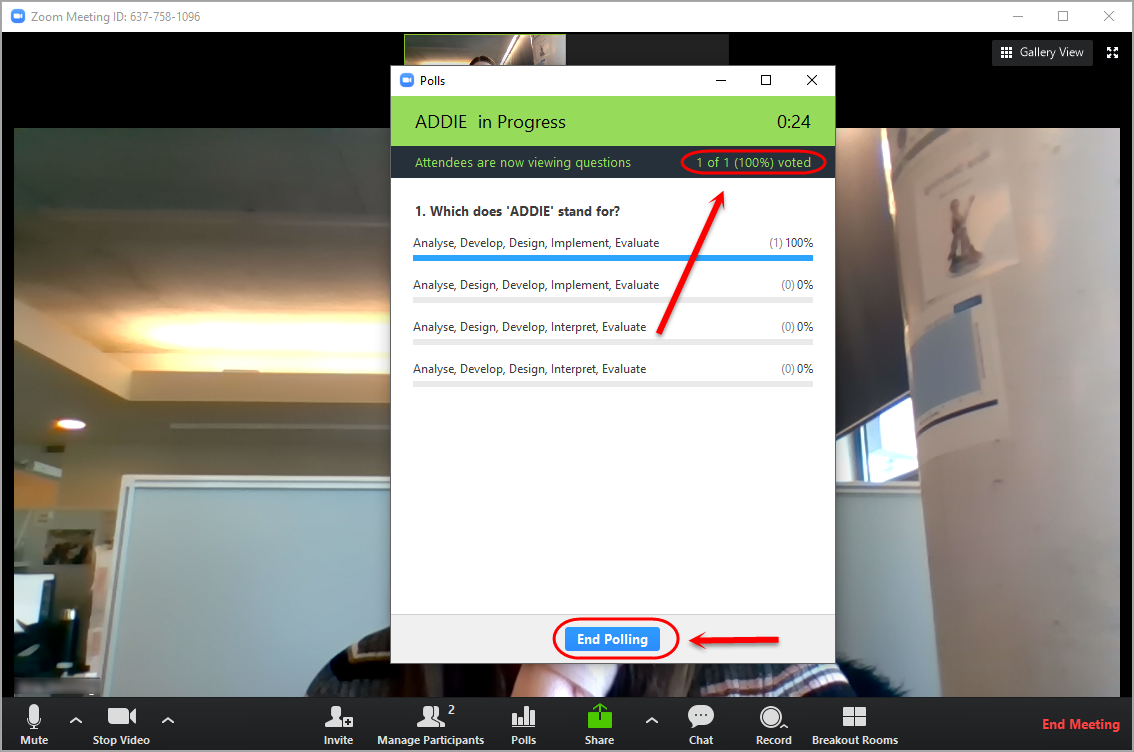Tips for Using Zoom for Teaching (Original)
The following tips are recommended when using Zoom as a virtual classroom or teaching tool.
Classroom host controls
Host controls allow you as the host to control various aspects of the Zoom Meeting. For example, as a host, you are able to mute all participants' microphones. For a full explanation of the controls, refer to the Host controls guide (by Zoom).
![]()
User Limits
Log a request with the ITS Service Desk if you are planning to host a Zoom Meeting with more than 300 participants to ensure your room has the correct capacity enabled.
Creating a reusable classroom link
Creating a reusable link means you will only have to share a single web address with students for the entire semester, which they can then bookmark in their chosen browser.
- Go to https://uqz.zoom.us (Zoom web interface NOT the desktop client) and sign in with your UQ credentials.
- Select the Meetings tab, then select the Schedule a New Meeting option.
- Enter a title for your meeting in the Topic: field.
- Enter start date and time, and the expected duration of the meeting.
- If you wish to create a recurring meeting, select the Recurring meeting option, then set the recurring meeting options. Set the Recurrence field to No Fixed Time to create a permanent meeting.
Tip: Creating a Recurring meeting with No Fixed Time allows you to put this single link into your Blackboard course for the whole Semester instead of the link changing for each scheduled classroom session.
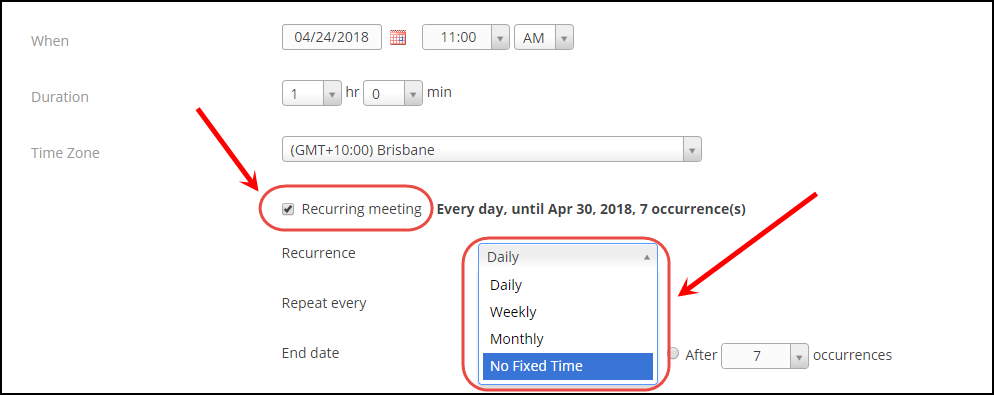
Limit meeting access to UQ staff and students
You can limit access to Zoom meetings by allowing only users that sign in with an @uq.edu.au domain.
- When scheduling a meeting check the Only signed-in users with specified domains can join meetings checkbox.
- Additionally, check the Include approved domains *.uq.edu.au checkbox.

Joining before the host
You are able to allow students to enter the Zoom meeting before you do, which means if you are running late, students will still be able to join.
- Select the Allow participants to join option when setting up your room.
- Early arrivals will see the zoom interface and a black screen. A notification the host has not arrived may temporarily display.
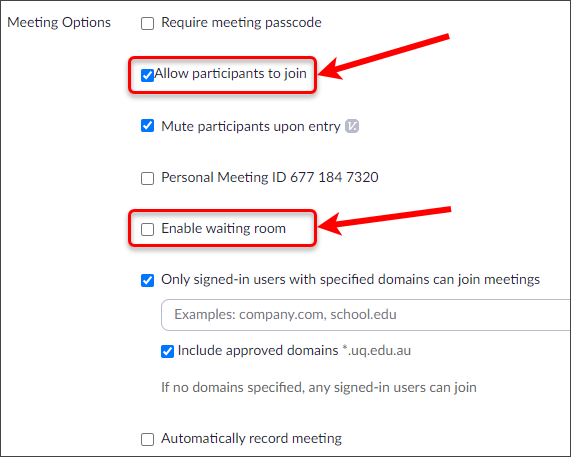
Tip: If you do not wish people to enter the room before you are ready, you can create a waiting room. This will display a message to participants that they are in a waiting room. You will need to admit people from the waiting room as required. Refer to the Zoom waiting rooms for online exams guide for more detailed information.
Warning: This setting is not recommended if Record the meeting automatically is enabled, as every time a new student joins the meeting before the host, a new recording will automatically be recorded.
Audience webcam and audio settings
To avoid problems with bandwidth, you are able to automatically turn off participants' webcam and microphone on entry.
- Set the Video options for participants (and/ or presentor) to Off in your individual session or Advanced profile settings.
Note: You can enable video individually for users using the host controls.

- To mute participants automatically on join, select the Mute participants upon entry option.
Note: This option helps to ensure that a meeting in progress is not disturbed by joining participants.
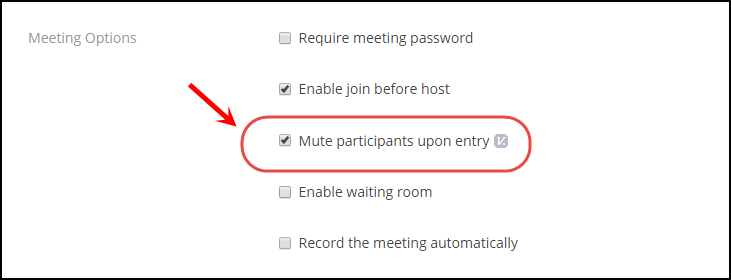
Recording advisory
If you are planning to record a session, you must advise the participants that they are being recorded. The UQ policy and procedure on lecture recording are available online. The steps to record a session are found in the zoom user guide (by ITS).
Enable multiple audio notifications
A recorded message does play when you commence recording, however late arrivals will not hear this.
- Enable the setting Multiple audio notifications of recorded meeting located in the advanced settings under Meeting Settings> Recording tab.
Share a file through chat
If you wish to share a file with participants (e.g. a document, PDF) you need to enable the function in your profile settings prior to the session.
- Go to https://uqz.zoom.us (Zoom web interface NOT the desktop client) and sign in with your UQ credentials.
- Select the Meetings Settings tab.
- Scroll down to locate the File transfer setting (Under the In Meeting (Basic) options).
- Set the button so that is turn from grey (off) to blue (on).

- Within the Zoom room, click on the Chat button.
![]()
- Click on the File button.
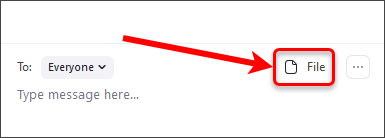
- You can then browse your computer and upload the file which will load in the chat box.
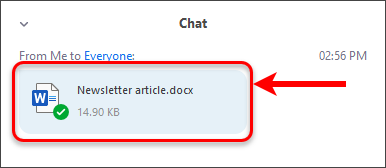
Save chat
You are able to save a copy of the chat conversation from a Zoom meeting. For step-by-step instructions, refer to the Saving in-meeting chat guide (by Zoom).
- Select the More option within the meeting's chat interface, then select Save Chat.
- This will save a text log of the chat to your computer, within your My Documents/Zoom folder.
- Once you have selected Save Chat, you can quickly open the save location by selecting the Show in Folder option.
Taking attendance
The Zoom web interface allows you to generate a report that lists all participants that attended your classroom or meeting session.
For step-by-step instructions, refer to the Generate a report of meeting participants guide.
Active learning tools
Padlet
The course coordinator is able to create a Padlet prior to the meeting and then share it during the meeting so students can contribute in real-time. For step-by-step instructions on creating a Padlet, refer to the Create a Padlet guide.
- Load the Padlet within your chosen browser.
- Share your browser window within the Zoom meeting.
- Instruct students to have Zoom open on their computer and Padlet open in their browser.
- Students can then contribute to the Padlet in real-time with entries appearing live in the Zoom meeting.
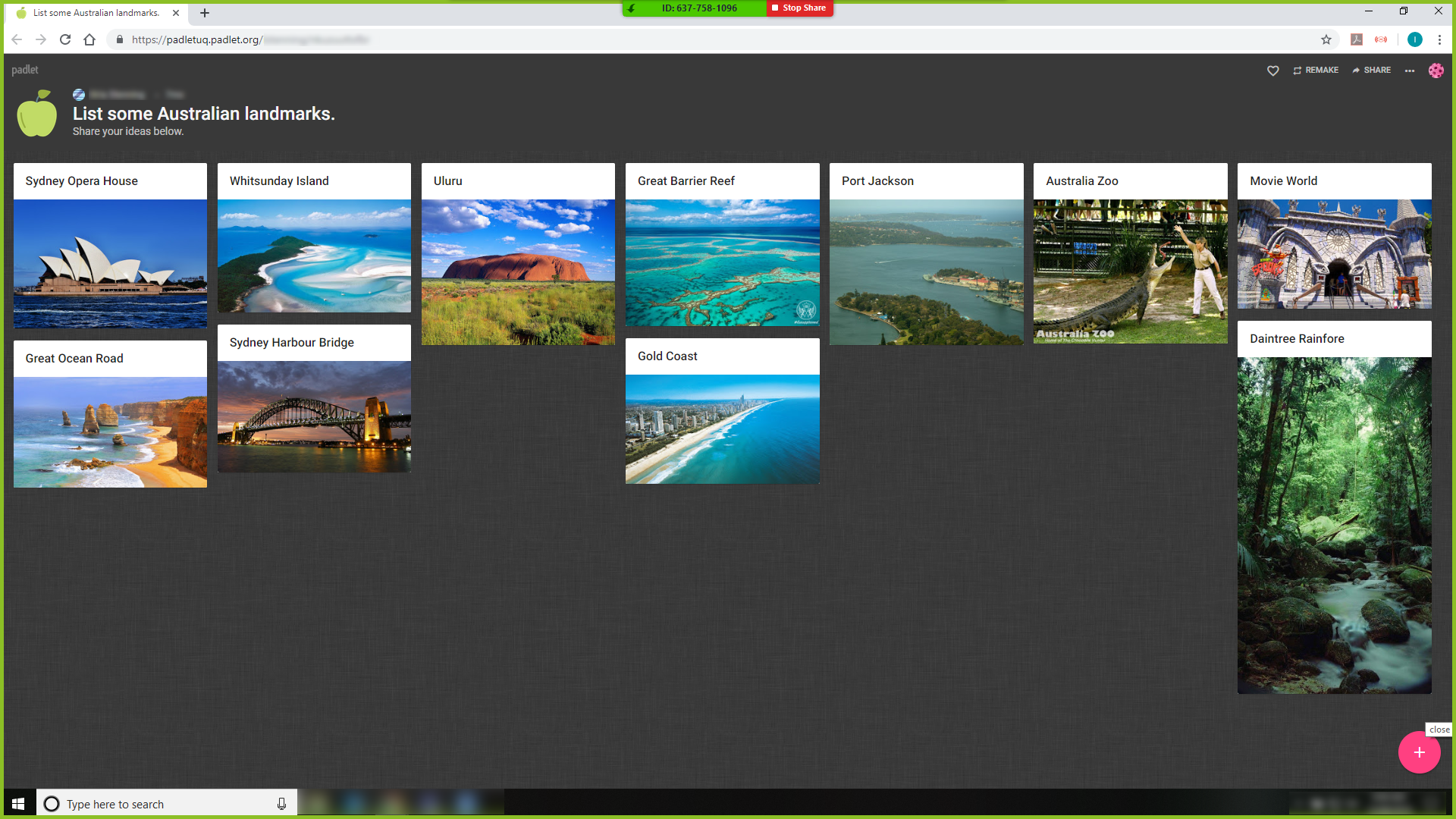
Reactions
Students are able to use reactions to provide non-verbal feedback to their course coordinator during a Zoom meeting. Reactions are useful for quickly gaging student responses to a particular question or topic. For more information, refer to the Reactions in a Zoom meeting guide.

Polling
Polling functionality allows staff to create polls which can be deployed to students during a Zoom meeting. Polling is useful as a knowledge check tool and for quickly gaging student opinions on a particular topic. For more information, refer to the Polling in a Zoom meeting guide.
